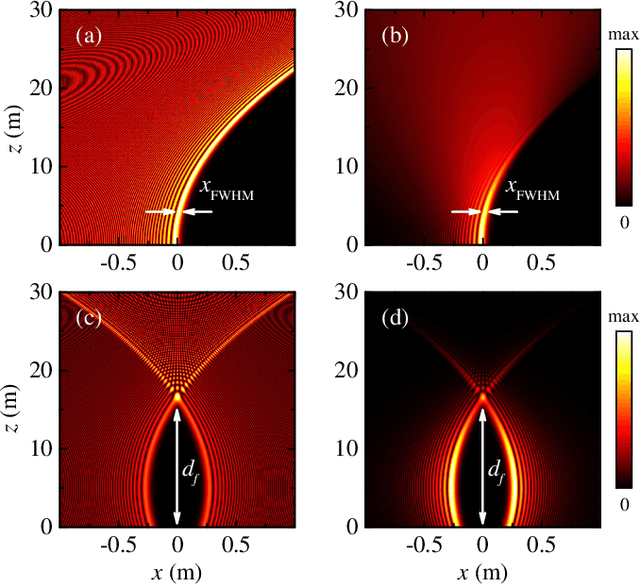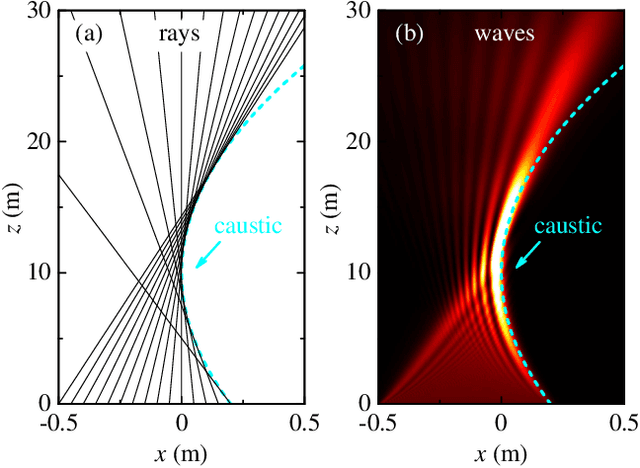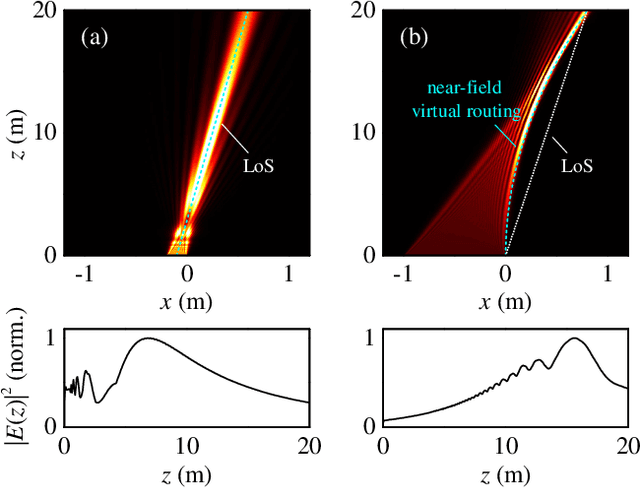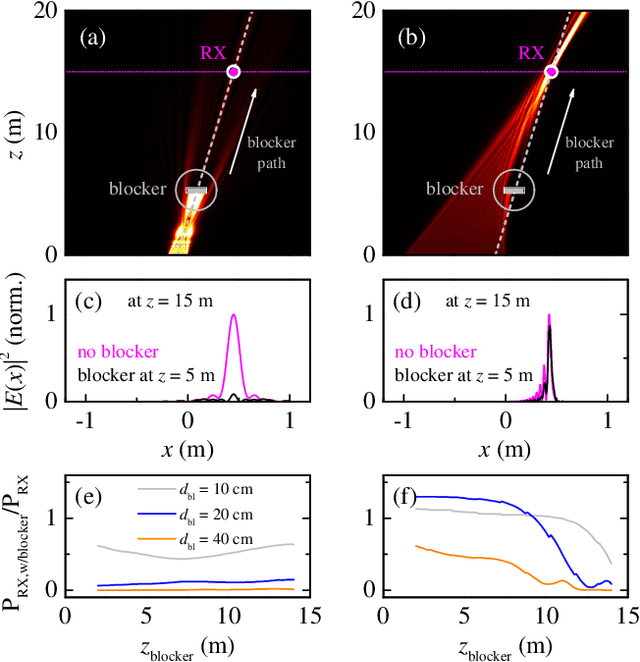Bending beams for 6G near-field communications
Paper and Code
Oct 10, 2024



Future wireless connectivity is envisioned to accommodate functionalities far beyond broadband data transmission over point-to-point direct links, enabling novel scenarios, such as communication behind blockers and around corners, and innovative concepts, such as situational awareness, localization and joint communications and sensing. In this landscape, beams that are able to propagate on bent paths are ideal candidates for dynamic blockage avoidance, interference management in selected regions, and user connectivity on curved trajectories. In this work, we study beam shaping for applications in near-field wireless connectivity. We explain the underlying mechanism of beam bending and we present the design principles for tailoring the curvature of the propagation trajectory. We discuss design aspects for generation of such beams with large arrays and analyze the impact of several parameters on their performance, including the beam's footprint shape, the aperture size, the inter-element spacing, the sub-array selection of active elements, the available phase levels of the array elements and the operating frequency. We introduce the concept of near-field virtual routing (NFVR) and we demonstrate that such beams are able to address challenges of high frequency communications, such as dynamic routing, blockage avoidance and energy-efficiency, more efficiently than conventional beamforming.
 Add to Chrome
Add to Chrome Add to Firefox
Add to Firefox Add to Edge
Add to Edge